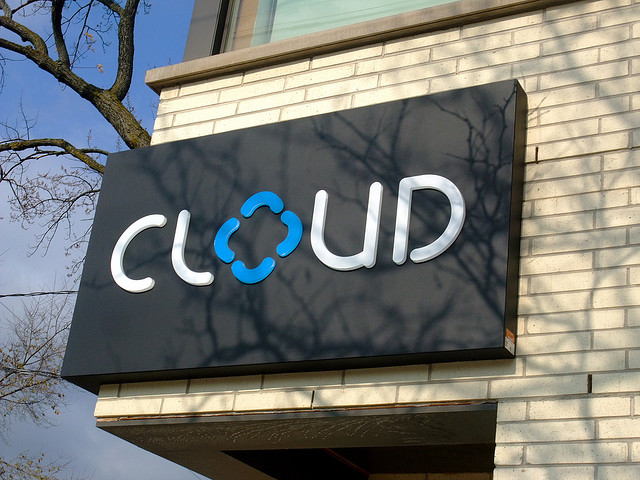Cloud Computing Essentials

CLOUD COMUPTING ESSENTIALS
Course Description
Gain solid understanding of fundamental concepts, deployment, architecture, and design of the cloud computing platform in this interactive course. You will learn about the evolution of the cloud and how increases in processing power and bandwidth have made cloud computing possible today. You will also learn who’s who in cloud computing and explore the products and services offered as well as common platforms and applications. You will examine the pros and cons of implementing the cloud computing platform, including the financial benefits and the security risks, and you’ll learn about cloud computing standards and best practices.
What you’ll Learn in Class
- Essential elements of cloud computing
- Pros and cons of cloud computing
- Who’s who in cloud computing and the product and services they offer
- The business case for going to the cloud
- How to build a cloud network
- Virtualization architecture
- Products used to implement the virtualization architecture
- Security and privacy issues with cloud computing
- Federation and presence
- Cloud computing standards and best practices
- Platforms and applications used by cloud computing end users
- How mobile devices can be used in the cloud
Who Needs to Attend
Those interested in learning the essentials of cloud computing, including an IT manager who is determining whether or not to use cloud services, an implementer who needs to understand the cloud, or sales or marketing professionals who sell cloud services
Follow-on Courses
- Data center infrastructure Management (p.55)
- VMware vSphere: Install, configure, manage [V4.1] (p.70)
- VMware View: install, configure, manage [V4.1} (p. 75)
- Enterprise Virtualization using Microsoft Hyper-V (M6422, M6331)
(see our web site)
- DCASD – Data Center Applications Services v2.0 (p.39)
Course Content
- Introduction to Cloud Computing
- What is Cloud Computing?
– Definition, Infrastructure, and Terms
- Benefits and Limitations of Cloud Computing
- How Companies are using Cloud Computing
– Implementing Applications and Services in the Cloud
– Using Your Company vs. the Cloud Computer
- Cloud Computing Risks and Issues
- Who’s Who in Today’s Cloud
- Cloud Computing Companies
- Products and Services Provided
- The Business Case for Going to the Cloud
- Benefits of Cloud Computing
– Operational
– Staffing
– Economic
- Should Your Company Invest in Cloud Computing?
- The Evolution of Cloud Computing
- Early Mainframe Environment
- LANs and the Cloud
- Internet and the Cloud
- Web Services, Browsers, and the Cloud
- Thin Client
- Advances in Networking and Processing Speeds that Led to Cloud Computing
– Network Developments
– Increased Processing Speeds
- Managed Service Provider Model to Cloud Computing and Software as a Service (SaaS)
– Single Purpose Architectures Migrate to Multipurpose Architectures
– Data Center Virtualization
- Collaboration
- Service-Oriented Architecture (SOA)
– Evolving from SOA to the Cloud
– Capacity, Availability, and Security
- What’s Next in Cloud Computing
- Building Cloud Networks
- Designing and Implementing a Data Center-Based Cloud
– Using Industry and International Standards
– Independent Components
– Message Base
– Location Independence
- Communication Requirements for Cloud Implementation
– Public and Private Internet
– Routing to and switching within the Data Center
– Bandwidth
– Security
- Storage Options for Cloud Computing
- Server Software Environments
- Vendor Approaches to Cloud Computing
- Rose of Open Source Software in Data Center
– Cost Reduction vs. Reliability
– Server, Database, and Applications Software
– System Management and Load-Balancing Software
- Virtualization
- Student Virtualization Architectures
– The Hypervisor
– Virtualization with a host OS
– Virtualization as the OS
- Virtualization Infections of Virtualized Environments
- Virtualization Environments
– Microsoft Virtualization
– Linux/UNIX Virtualization
– VMware Products
– Using Vmware to see a Virtualized Server Environment
– Sun xVM VirtualBox
– IBM Virtualization
- Federation, Presence, Security, and Privacy in the Cloud
- Federation in the Cloud
– Permissive Federation
– Encrypted Federation
– Using XMPP in the Federated Environment
– Verified Federation
– Trusted Federation
- Presence in the Cloud
– Presence Protocols
– Presence Enabled
– Interrelation of Identity, Presence, and Location in the Cloud
– Leveraging Presence
– The Future of Presence
- Identity Management
– What It Is and the Future of Identity in the Cloud
- Privacy and Its Relation to Cloud Based Information Systems
- Cloud Computing Standards and Best Practices
- Open Cloud Consortium
– What it is
– Working Groups
- Distributed Management Task Force (DMTP)
– What it is
– Working Groups
- Standards for Application Developers
– Protocols
– Content Formatting Standards and Languages
– Scripting Languages
- Standards for Security in the Cloud
– Confidentiality, Integrity, Availability
– Authentication, Authorization, Accountability
– Regulations for Privacy
– Security Protocols
- Establishing a Baseline for Cloud Computing
- Best Practices for Selecting a Vendor and Implementing Cloud-Based Applications
– Choosing the Right Vendor
– Implementing Cloud Based Applications
- End-User Access to Cloud Computing
- Cloud Access Methods Available to End Users
– Citrix
– Windows Remote Desktop
– Web Browsers
– Thin Clients
– Smart Phones, Pads, Pods, etc.
– Server Extensions
- Virtual Terminal Security Strengths and Weaknesses
- Mobility and the Cloud
- Mobile Operating Systems for Smartphones
– iPhone
– BlackBerry
– Ubuntu Mobile Internet Device
– Android
– Windows Mobile
- Mobile Platform Virtualization
– Kernel-Based Virtual Machine
– VMware Mobile Virtualization Platform
Collaboration Applications for Mobile Platforms
- Text Messaging
- BlackBerry Applications
- IPhone Applications
- Droid Applications